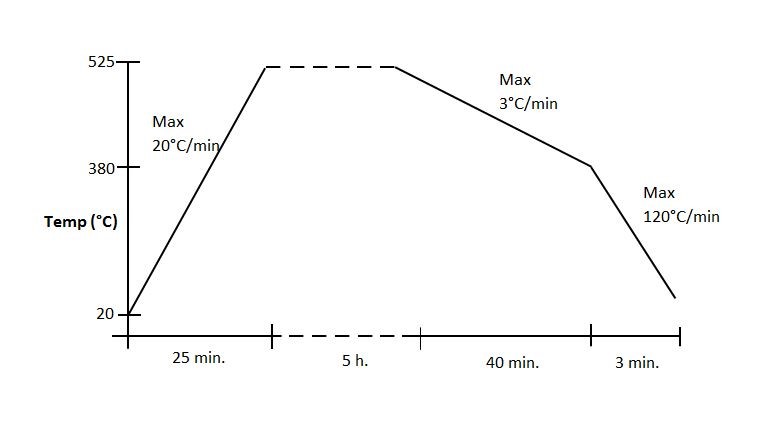Content: 100 assays / 200 assays
Shipping Temperature: Ambient
Storage Temperature: Short term stability: 2-8oC,
Long term stability: See individual component labels
Stability: > 2 years under recommended storage conditions
Analyte: Dietary Fiber
Assay Format: Enzymatic
Detection Method: Gravimetric
Signal Response: Increase
Limit of Detection: 0.5 g/100 g
Total Assay Time: ~ 100 min
Application examples: Food ingredients, food products and other materials.
Method recognition: AACC Method 32-05.01, AACC Method 32-06.01, AACC Method 32-07.01, AACC Method 32-21.01, AOAC Method 985.29, AOAC Method 991.42, AOAC Method 991.43, AOAC Method 993.19, CODEX Method Type I and GB Standard 5009.88-2014
The Total Dietary Fiber Assay Kit for the analysis of Total, Soluble and Insoluble Dietary Fiber according to AOAC and AACC approved methods.
View Dietary Fiber Measurement Guide - Which Method for which sample?
Dietary fiber can generally be described as the carbohydrate content of food that is not digested in the human small intestine. It passes into the large intestine where it is partially or fully fermented. These characteristics of dietary fiber are associated with its numerous well documented health benefits.
Dietary Fiber is a mixture of complex organic substances, including hydrophilic compounds, such as soluble and insoluble polysaccharides and non-digestable oligosaccharides, as well as a range of non-swellable, more or less hydrophobic, compounds such as cutins, suberins and lignins. The procedures for the determination and analysis of total dietary fiber as outlined in our assay protocol are based on the methods of Lee et al.1 and Prosky et al.2,3 (AOAC 991.43, AOAC 985.29, AACC 32-07.01 and AACC 32-05.01). However, the enzymes in the Megazyme Total Dietary Fiber Kit can also be used in other dietary fiber analytical methods such as AACC Method 32-21.01 and AACC Method 32-06.01.
1. Association of Official Analytical Chemists. (1985). Official Methods of Analysis, 14th ed., 1st suppl. Secs. 43, A14-43, A20, p.399.
2. Association of Official Analytical Chemists. (1986). Changes in methods. J. Assoc. Off. Anal. Chem., 69, 370.
3. Association of Official Analytical Chemists. (1987). Changes in methods. J. Assoc. Off. Anal. Chem., 70, 393.
See General Referee Reports: Journal of AOAC INTERNATIONAL, Vol. 81, No. 1, 1998.
Two separate methods are described in the associated assay protocol:
METHOD 1: DETERMINATION OF TOTAL, SOLUBLE AND INSOLUBLE DIETARY FIBER
Based on AOAC Method 991.43 “Total, Soluble, and Insoluble Dietary Fiber in Foods” (First Action 1991) and AACC Method 32-07.01 “Determination of Soluble, Insoluble, and Total Dietary Fiber in Foods and Food Products” (Final Approval 10-16-91).
METHOD 2: DETERMINATION OF TOTAL DIETARY FIBER
Based on AACC method 32-05.01 and AOAC Method 985.29.
含量:100个分析/200个分析
运输温度:环境温度
储存温度:短期稳定性:2-8oC,
长期稳定性:参见单个组件标签
稳定性:在推荐的储存条件下超过2年
分析物:膳食纤维
测定形式:酶法
检测方法:重量法
信号响应:增加
检测限:0.5 g/100 g
总测定时间:~100分钟
应用实例:食品配料、食品及其他材料。
方法识别:AACC方法32-05.01,AACC方法32.06.01,AAC方法32-07.01,AACC方法32-21.01,AOAC方法985.29,AOAC法991.42,AOAC方式991.43,AOAC办法993.19,CODEX方法I型和GB标准5009.88-2014
根据AOAC和AACC批准的方法,用于分析总膳食纤维、可溶性膳食纤维和不溶性膳食纤维的总膳食纤维测定试剂盒。
查看膳食纤维测量指南-哪种方法适用于哪个样本?
膳食纤维通常可以描述为食物中未在人体小肠中消化的碳水化合物含量。它进入大肠,在那里部分或完全发酵。膳食纤维的这些特性与其众多有充分证明的健康益处有关。
膳食纤维是复杂有机物质的混合物,包括亲水性化合物,如可溶性和不溶性多糖和不易消化的低聚糖,以及一系列不溶胀、或多或少疏水的化合物,如角质、木栓素和木质素。我们的测定方案中概述的总膳食纤维的测定和分析程序基于Lee等人1和Prosky等人2,3的方法(AOAC 991.43、AOAC 985.29、AACC 32-07.01和AACC 32-05.01)。然而,Megazyme总膳食纤维试剂盒中的酶也可用于其他膳食纤维分析方法,如AACC方法32-21.01和AACC方法32.06.01。
1.官方分析化学家协会。(1985)。《官方分析方法》,第14版,第1次增补,第2节。43,A14-43,A20,第399页。
2.官方分析化学家协会。(1986)。方法的变更。J.助理分析。化学。,69370。
3.官方分析化学家协会。(1987)。方法的变更。J.助理分析。化学。,70393。
见《总裁判报告:AOAC国际期刊》,1998年第81卷第1期。
相关分析方案中描述了两种独立的方法:
方法1:总膳食纤维、可溶性膳食纤维和不溶性膳食纤维的测定
根据AOAC方法991.43“食品中的总、可溶性和不溶性膳食纤维”(1991年第一次行动)和AACC方法32-07.01“食品和食品中可溶性、不溶性和总膳食纤维的测定”(最终批准10-16-91)。
方法2:总膳食纤维的测定
基于AACC方法32-05.01和AOAC方法985.29。
Q1. Should the pH of the sample be adjusted even for samples in acidic media?
The pH of the assay solution after the sample is added should be the same as that of the assay buffer that is supplied with the kit.
Low sample volumes (e.g. 0.1 mL) are not likely to affect the pH of the assay solution and therefore may not require pH adjustment.
Samples above 0.1 mL are more likely to affect the pH of the assay solution and therefore the pH of these samples should be adjusted as described in the data booklet, prior to addition to the assay.
The enzymes are very stable. In fact on storage at room temperature for 10 months, the decrease in activity of thermostable alpha-amylase and amyloglucosidase is less than 10% and the decrease in activity in protease is about 40%. When stored at 4˚C, the enzymes are stable for about 5 years, and at -20˚C they are stable for more than 10 years.
Our kit is applicable to the measurement of Soluble, Insoluble and Total Dietary Fibre as per the AOAC/AACC methods. The main value of our kit is that the Amyloglucosidase is free of Cellulase, i.e. the Beta-Glucan will not be degraded and underestimated.
The main reason for the stated 100˚C is to ensure that the starch is gelatinised and hydrolysed by alpha-amylase. We are sure that a temperature of 95˚C should be fine.
It is necessary to measure the nitrogen in the residue. Most protein is removed by protease action. We think it best to follow the AOAC method as closely as possible.
If you suspect that the Megazyme test kit is not performing as expected such that expected results are not obtained please do the following:
The crucible has the potential to break if heated or cooled too rapidly . The graph below shows the manufacturer's recommended heating and cooling profile for safe use with the crucible.
A volume reduction occurs on mixing water with 95% ethanol (or IMS). 1 L of 78% ethanol is prepared by adding 821 mL 95% ethanol (or IMS) to 207 mL H2O.
If using a 1 L volumetric flask, this is best accomplished by placing 821 mL 95% ethanol (or IMS) into the volumetric flask. Dilute to volume with deionised water. Mix well. Check the level and if necessary add more deionised water to bring it back up to the 1 L mark.
膳食纤维检测中文版说明
FDA 关于膳食纤维检测指标的新规则
Megazyme 溶解淀粉 操作视频
Megazyme 试剂盒样品前处理准备操作视频
最有帮助的评价(0)
暂时还没有任何用户评论-